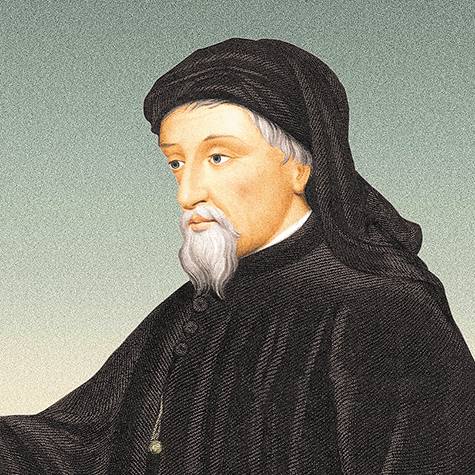
Where did Valentine’s Day come from anyway?
The answer is a bit complex, and very much depends on what you mean by the question. If you want to know the origins of a day in mid-February dedicated to romance, you should look no further back in time than Geoffrey Chaucer (1343–1400), who is often cited as the first person to write about the holiday as a celebration of love. In a poem entitled The Parliament of Fowls, a flock of birds gathers to debate politics, nature, and erotic desire. At its end, Chaucer praises St. Valentine for “providing promise that, even in the depths of winter, summer is not all that far off.” (A poignant reminder, as I gaze outside my window on this very frosty winter morning.)
Another early influence was none other than Shakespeare, whose writings sometimes seem to have influenced every facet of modern life. In Hamlet (Act 4, Scene 5), Ophelia waxes poetic:
Tomorrow is St. Valentine’s Day
And early in the morning
I’m a girl below your window
Waiting to be your Valentine.
Then he got up and put on his clothes
And opened the door to his room.
He let in the girl, and when she left
She wasn’t a virgin anymore.
So Chaucer and Shakespeare provide the earliest evidence of a connection between Valentine’s Day and love.
But that is not the end of the question, because the feast day of St. Valentine existed a very long time before either of these Middle Ages auteurs put quill to parchment. Romantic it was not, however.
Contrary to common belief, there is not a single St. Valentine that we recognize on February 14. Rather, there are two: Valentine of Rome and Valentine of Terni, both Christian clergymen who were martyred at the hands of Roman emperors. Popular legends have embellished upon the truth, and nowadays the story is told that Valentine of Rome, on the eve of his martyrdom, wrote the first “valentine” to the daughter of his jailer—and he signed it “Your Valentine.”
This almost certainly didn’t happen, but it does help to reconcile our modern notions of a romantic holiday with the Catholic Church’s commemoration of two martyrs’ bloody deaths.
Indeed, there is a third way to peg the origins of Valentine’s Day. In the winter of 1913, for the first time ever, Hallmark unleashed hordes of valentines cards upon unsuspecting Americans everywhere. One could argue, perhaps a bit cynically, that this is the truest origin of our multibillion-dollar commercial holiday.


















